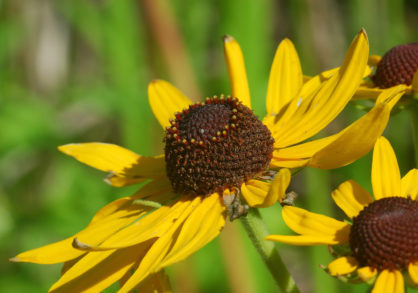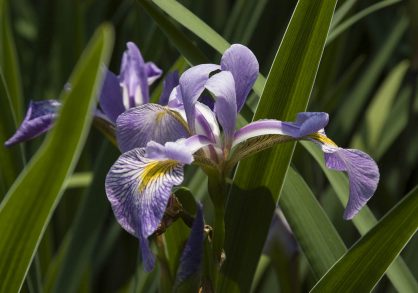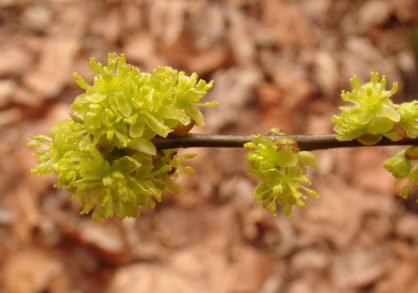When designing the Nevin Welcome Center at Cornell Botanic Gardens, the architects approached us with an idea they felt would help us achieve the LEED (Leadership in Energy and Environmental Design) Gold rating we sought for the building – installing a bioswale. As a botanic garden, we were familiar with the benefits of bioswales – channels or ditches that reduce stormwater runoff, clean the water of particles and pollutants, and replenish the groundwater. But if we were going to install one, it had to be more than just a bioswale. We went to create a garden worthy of the “front-door” of Cornell Botanic Gardens, one of the most ecologically valuable, biodiverse, and aesthetically pleasing bioswale gardens on campus and perhaps in North America.
In the 11 years since it was installed, the Bioswale Garden continues to capture 90 percent of the surrounding stormwater runoff and removes 80 percent of the suspended solids found in the runoff, including harmful pollutants such as metal, bacteria, nitrogen and phosphorous. This green stormwater management system uses plants, roots, small stones and soil to slow the flow of stormwater so that it seeps naturally into the soil and empties into nearby Beebe Lake cleaner than when it entered the bioswale.
While cleaning and slowing down stormwater runoff is the bioswale’s primary purpose, this garden also offers much more. Its diversity of plants provide habitat for insects, including pollinators, birds, reptiles, amphibians, and mammals, including a few foxes. This hardworking garden is also a great teaching landscape. It is used by classes in engineering, landscape architecture, green real estate, plant science, entomology, ornithology, natural resources, and art. Several Cornell researchers have used the bioswale garden to examine its ability to remove pollutants, support a range of insects, and to understand how well plants tolerate the range of conditions found in bioswales.
The aesthetic design of the garden is one of the features that makes this bioswale so remarkable. Its location at the entrance to the Nevin Welcome Center and central gardens called for a bioswale that was unlike any other – one that had to WOW visitors upon their arrival to Cornell Botanic Gardens.
Drawing inspiration from the flow of water on the existing landscape – Fall Creek used to flow through the area where the Welcome Center now sits – we designed the plantings to be reminiscent of flowing water. The braided drifts of plantings of nine cultivars of Switchgrasses (Pannicum virgatum) permeate the design. These drifts flow around more structural perennials, such as sneezeweed (Helenium autumnale), Joe Pye Weed (Eupatorium maculatum ‘Gateway’), and bee balm (Monarda didyma), as well as shrubs and small trees, such as red chokeberry (Aronia arbutifolia ‘Brilliantissima’), and American hornbeam (Carpinus caroliniana). Irene Lekstutis, Cornell Botanic Gardens’ landscape designer, was a key player in the bioswale garden’s design, and shares some favorite plants chosen for their ecosystem benefits, their architectural structure, and for the beauty they provide in the landscape.
The bioswale garden has inspired similar installations across the Cornell campus to help the university manage its stormwater runoff. Cornell Botanic Gardens bioswale also serves as a model for other botanic gardens and landscape architects looking for ecologically beneficial and aesthetically striking gardens. The Bioswale Garden continues to grow, evolve, and deliver many benefits to our ecosystem, gardens, visitors, and the Cornell University campus.
Highlights
View some of our favorite Bioswale Garden plants.


